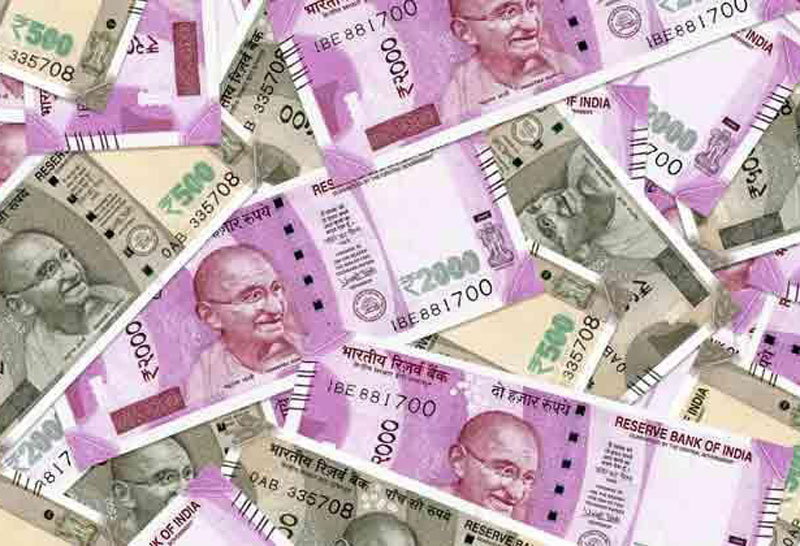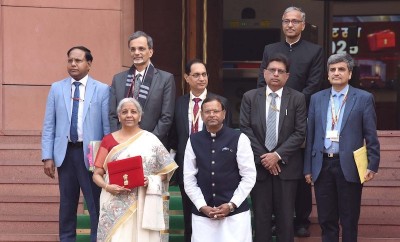 Budget | ICRA
Budget | ICRA
Gross market borrowings of Centre, states seen at Rs. 24.4 trillion; fiscal deficit to dip to 5.8 pc of GDP in FY24: ICRA
New Delhi/IBNS: Credit ratings agency ICRA anticipates that the Indian government will peg its fiscal deficit in the FY24 Budget estimates at 5.8% of the GDP, a healthy moderation from the 6.4% of GDP projected for FY2023.
Nevertheless, with higher redemptions, Centre’s gross market borrowings and the General Government is expected to rise to Rs. 14.8 trillion and Rs. 24.4 trillion, respectively, in FY2024 from Rs. 14.1 trillion and Rs. 22.1 trillion, respectively, in FY2023, ICRA said in a statement.
According to Aditi Nayar, Chief Economist and Head – Research and Outreach, ICRA Ltd: “With a global growth slowdown looming large, the FY2024 Union Budget needs to focus on sustaining the domestic growth momentum, while at the same time demonstrating a continued commitment towards fiscal consolidation in addition to limiting the rise in the market borrowings.”
As per ICRA’s assessment, the FY24 Union Budget can appreciably enhance the government’s capital expenditure to Rs. 8.5-9.0 trillion and target a lower fiscal deficit of 5.8% of GDP, aided by the welcome cushion offered by lower subsidies.
“Despite this, higher redemptions will enlarge its gross dated market borrowings to Rs 14.8 trillion in FY2024 from Rs 14.1 trillion in FY2023,” Nayar said.
Aided by robust direct tax collections and GST inflows, India’s net tax receipts are likely to overshoot the budgeted amount by a healthy Rs. 2.1 trillion in FY2023, the ratings agency said.
This, combined with expenditure savings to the tune of approximately Rs. 1.0 trillion along the lines seen over the last 5-6 years on an average, are expected to partly offset the sizeable net cash outgo announced in the First Supplementary Demand for Grants and the shortfall in non-tax revenues and disinvestment receipts.
“Consequently, ICRA expects the GoI’s fiscal deficit to print at Rs. 17.5 trillion in FY2023, exceeding the budgeted amount of Rs. 16.6 trillion. However, a larger-than-estimated GDP would allow the fiscal deficit to remain at the budgeted target of 6.4% of GDP,” the rating agency added.
Further, as per ICRA estimates, the Centre’s gross tax revenues (GTR) in FY2024 should be around Rs. 34 trillion, a YoY expansion of 9.4% (over projected level for FY2023), with growth in direct taxes likely to outpace that in indirect taxes.
The latter is expected to be constrained by customs duty collections and reversion of excise duty on auto fuels to pre-Covid levels.
The estimated growth in GTR is similar to ICRA’s nominal GDP growth forecast of 10% for FY2024, implying a tax buoyancy of nearly 1.0, in line with the decadal average seen during FY2010-19.
The ratings agency projects the Indian government to target double-digit growth in capital expenditure to Rs. 8.5-9.0 trillion in FY2024, relative to the level of Rs. 7.5 trillion, expected in FY2023.
In contrast, revenue spending is expected to rise by a relatively muted nearly 3%, dampened by a lower outgo on account of the food and fertiliser subsidy.
While ICRA expects the government’s revenue deficit to recede to Rs. 9.5 trillion in FY2024 from Rs. 10.5 trillion in FY2023, the fiscal deficit would dip only mildly to Rs. 17.3 trillion from Rs. 17.5 trillion, respectively, led by higher capex.
Nevertheless, as a proportion of GDP, the fiscal deficit is expected to ease to 5.8% from 6.4%, respectively.
“The quality of spending and of the fiscal deficit is expected to improve in FY2024 vis-à-vis FY2023, following the relatively faster growth foreseen in the GoI’s capex. However, the share of interest payments in total expenditure will remain elevated at ~24-25%, owing to the sizeable increase in the GoI’s debt outstanding in the post-Covid period, underscoring the need to limit borrowings, going ahead,” Nayar added.
ICRA further said that it expects the government to place its net market borrowings in FY2024 at Rs. 10.4 trillion, lower than Rs. 10.9 trillion in FY2023.
With higher redemptions, its gross market borrowings appear set to rise to Rs. 14.8 trillion from Rs. 14.1 trillion, respectively.
State government market borrowings have been compressed in FY2023 for a variety of reasons, it said.
Given the normal borrowing limit of 3.0% of the Gross State Domestic Product (GSDP) recommended by the Fifteenth Finance Commission for the state governments for FY2024, ICRA places its baseline estimate of the state’s fiscal deficit at Rs. 9.0 trillion for the coming fiscal.
Assuming that around 75% of this is funded by the State Government Securities (SGS), it suggests a net SGS issuance of Rs. 6.8 trillion.
Accordingly, ICRA estimates the total Centre and state net dated market borrowings to rise to Rs 17.2 trillion in FY2024 from Rs. 16.5 trillion in FY2023.
“With a larger redemption of G-sec and SGS, gross borrowings are estimated to enlarge to ~Rs. 24.4 trillion in FY2024 from the projected Rs. 22.1 trillion in FY2023. This is likely to push up the 10-year G-sec yield to 7.4-7.75% after the presentation of the Union Budget,” Nayar reiterated.
Support Our Journalism
We cannot do without you.. your contribution supports unbiased journalism
IBNS is not driven by any ism- not wokeism, not racism, not skewed secularism, not hyper right-wing or left liberal ideals, nor by any hardline religious beliefs or hyper nationalism. We want to serve you good old objective news, as they are. We do not judge or preach. We let people decide for themselves. We only try to present factual and well-sourced news.







